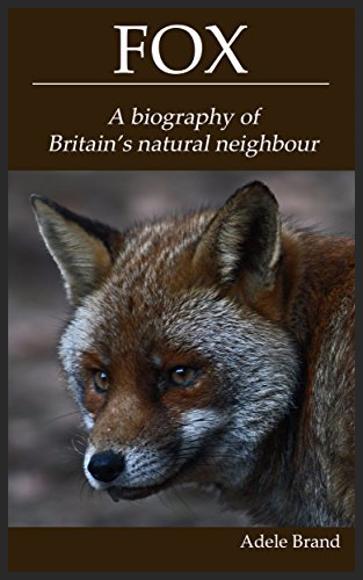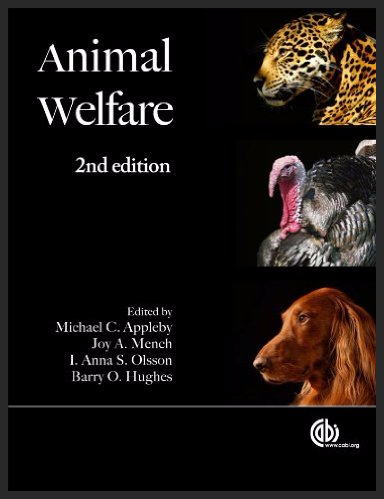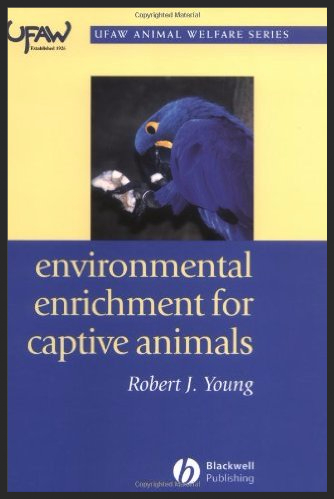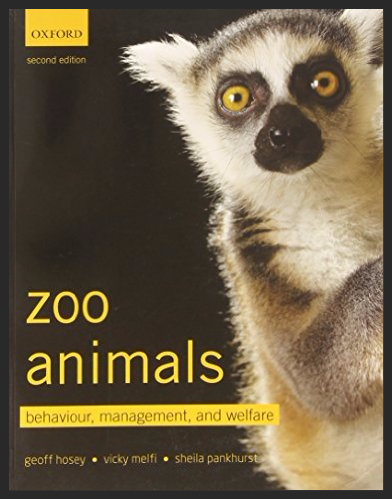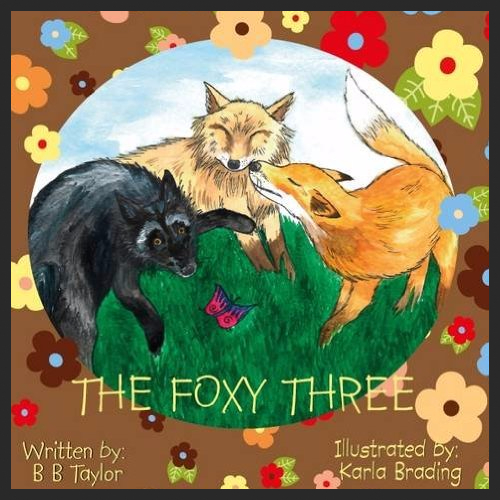Click on book cover to see how to order
The Red Fox
Red Fox: The Catlike Canine
J. David Henry
"In this engaging introduction to the red fox (Vulpes vulpes), J. David Henry recounts his years of field research on this flame-colored predator.
With its catlike whiskers, teeth, and paws, as well as vertical-slit pupils, the North American red fox not only resembles but often behaves like a feline, especially when hunting.
Probing the reasons for these similarities, Henry reveals the behavior and ecology of a species that thrives from the edge of suburbia to the cold northern tundra".
The Red Paper: CANIDS
Terry Hooper-Scharf
"The Red Paper: Canids Up-dated 2011 edition includes section on sarcoptic mange in foxes and treatment plus a list of wildlife sanctuaries and rescue centres in the UK.
By the 1700s the British fox was on the verge of extinction and about to follow the bear and wolf having been hunted for sport for centuries. The answer was to import thousands of foxes per year for sport. But foxes kept dying out so jackals were tried. Some were caught, some escaped. Even wolves and coyote were released for hunting. The summation of over 30 years research reveals the damnable lie of "pest control" hunting but also reveals the cruelty the animals were subject to and how private menageries as well as travelling shows helped provide the British and Irish countryside with some incredible events"
Fox Watching: In the shadow of the fox
Martin Hemmington
"With the benefit of illustrations, the book reveals the foxy meaning behind what you observe. Why do cubs nose the corners of the adults' mouths? What does it mean when the ears are out like wingnuts at the side of the head? Why are the foxes clicking at each other?
For this new edition the author has updated his information on how to find, attract and watch foxes, as well as how to photograph them and how, using wildlife cameras, you can gain an insight into what is happening with the foxes when you are not able to observe them. The author also explains how to analyse droppings in order to record the annual diet of your foxes, how to age a fox casualty and how to make casts of their footprints".
The Little Red Thief
Louise Wren
"Louise Wren was closing her bedroom curtains one night when she spotted a fox cub sitting alone and forlorn on her lawn. Realising it had been orphaned, she began to feed it, soon recruiting her grandchildren to help. So began an extraordinary relationship which changed Louise’s perception of foxes forever.
Foxyloxy, as she named ‘her’ fox, became a part of Louise’s family. And when her new protégée grew up and had a family of her own, Louise was able to follow every stage of the process and make friends of the cubs too; they even became TV stars. When Foxyloxy finally and inexplicably vanished from Louise’s garden and from her life, her attention turned to other foxes, and she became involved in the conservation and protection of the animals she had come to love".
Fox: A Biography of Britain's Natural Neighbour
Adele Brand
Fox: arguably Britain's most enigmatic and recognisable wild animal. We see them trot across roads in our car headlights. We hear them barking at night. But do we really know the fox in our midst?
This book explores how the astonishing senses, intelligence and behaviour that helped foxes thrive in the ancient wildwood now support them in south-east England. Richly illustrated with examples from the many foxes that the author has rescued, photographed and studied over the last 25 years and thoroughly researched from scientific literature, the fox comes to life: communicating, socialising, feeding - and interacting with its human neighbours.
Adele Brand MSc, BSc (Hons) is a freelance ecologist who has studied mammals in five countries. She lives in the North Downs, UK.
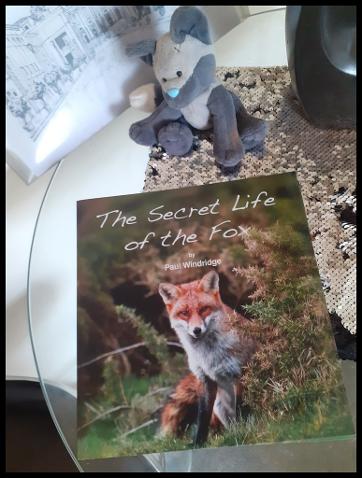
The Secret Life Of The Fox
Paul Windridge
"The third book has been written and photographed in 2020 and during this year of uncertainty and immense disruption the world of the fox has largely remained the same except new characters were born into the family. Because there weren’t as many people around, it was a time to get to know them even better then previously, and to be rewarded with two male cubs who were exceptionally friendly was way beyond expectations. The Secret Life of the Fox has more pages and is written in a different style to Fox Tales and Fox Family - with anecdotes and fox facts - still with young children in mind, but with over 100 photographs, it will hopefully be enjoyed by young and old alike"
The Silver Fox
How to Tame a Fox (and Build a Dog): Visionary Scientists and a Siberian Tale of Jump-Started Evolution
Lee Alan Dugatkin
"Tucked away in Siberia, there are furry, four-legged creatures with wagging tails... that are as docile and friendly as any lapdog. But, despite appearances, these are not dogs they are foxes. They are the result of the most astonishing experiment in breeding ever undertaken imagine speeding up thousands of years of evolution into a few decades. In 1959, biologists Dmitri Belyaev and Lyudmila Trut set out to do just that, by starting with a few dozen silver foxes from fox farms in the USSR and attempting to recreate the evolution of wolves into dogs in real time in order to witness the process of domestication. This is the extraordinary, untold story of this remarkable undertaking... How to Tame a Fox offers an incredible tale of scientists at work, while also celebrating the deep attachments that have brought humans and animals together throughout time"
Management of the Red Fox (Vulpes vulpes) in Captivity
Jessica Addams and Andrew Miller
"If you work for a growing animal facility which wishes to start a display of red foxes, this is the reference for you. Drawing from Wolf Park’s nearly four decades of experience working with socialized canids of many species, this book covers the basics of working with the fascinating, social and intelligent red fox in captivity. Many of its suggestions can be applied to the husbandry of other animals as well...
The book is designed for the animal professional as well as for those who simply love foxes, or would like to get a glimpse into what it is like to run an animal facility".
Nutrition and Nutritional Physiology of the Fox: A historical Perspective
William L. Leoscheke, Ph.D.
"Dr. J. E. Oldfield, Oregon State University, Corvallis, Oregon: "This is a very comprehensive book on fur animal nutrition and one which I am sure will become a 'Bible' for the industry . . . a landmark publication on the area of fur animal nutrition".
The Pet Fox: A Guide for The New or Potential Fox Owner
Gloria White
"Pet foxes are becoming increasingly popular pets these days. However, the challenge of owning a Red-type or Arctic fox is very real. This book is intended to serve as a primer for those who are considering a Red Fox or Arctic Fox as a pet, or for those who have just brought home their kit and are wondering what they have gotten themselves into.
From the legalities of owning a fox in your state, to the basics of care and feeding, this book takes you on an easy-to-follow journey from breeder to your home. All your basic questions will be answered and you will be able to determine if owning one of these beautiful, intelligent and often mischievous animals is right for you!"
Juniper: The Happiest Fox
Jessika Cocker
"Juniper's adorable snaggletooth smile and fun-loving personality are vibrantly captured in this heartwarming book. With gorgeous photos, a charming narrative about Juniper's life, and a behind-the-scenes look at what it's like to live with a fox, this book will capture the heart of any animal lover.
Juniper's story chronicles her adoption and real-life Fox and the Hound relationship with a dog named Moose as well as the hilarious shenanigans she regularly gets herself into including adapting to her new companion Fig, a younger fox who was rescued from a fur farm"
This Fox of Mine: An Entertaining Look into Life at Fox Hollow
K.L. Waggoner
"K. L. Waggoner has been raising, training, and breeding pet foxes for more than twenty years. This Fox of Mine: An Entertaining Look into Life at Fox Hollow tells her remarkable true story.
The book begins with her most ornery fox, Rascal, and describes his pranks and the things she learned while trying to outfox her fox.
She got her first pet fox in 1992, and had to learn everything about raising and training it. The book continues through the lives of ten foxes she has had as pets and each one’s personality".
The Silver Fox: A Text Book for Breeders and Beginners
C.C. Catchpole
Written in the 1930's at the peak of the "Silver Rush" at a time when farming foxes for fur was considered a triumph of of human achievement.
This historical guide is an interesting little read that gives an insight into the life of silver foxes bred in captivity in the early 1900's.
Bright With Silver
Kathrene Pinkerton
A Great American Success Story.
Bright with Silver describes the rise of the United States ginseng and fox farming industries through the story of the Fromm brothers.
The Fromms began their lives at the turn of the century as impoverished farmers and rapidly grew into the world’s largest ginseng and fox farmers, making tremendous discoveries along the way, including the canine distemper vaccine.
The book chronicles their business successes through the 1950's.
Beautiful Fur Animals - and their colour genetics
Nes Norodd & Einarsson J. Einar
"This beautifully produced and illustrated book should prove an indispensable reference work for the breeders and fanciers of fur animals. The coat colour genetics of fur bearers is explained in an introductory chapter, and there are separate chapters describing the many colour types in foxes, arctic foxes, interspecific fox hybrids, raccoon dogs, mink, polecats, pine and stone martens, nutria, sables and chinchillas, with information on their mode of inheritance. Notes are also given on body weights and measurements and behaviour. A useful glossary of biological terms is provided, in addition to a list of Scandinavian marketing names. There is an index of all the species, mutants and combination types described in the book, as well as a 6-page bibliography of relevant literature."
Animal Behaviour & Welfare
Domestic Animal Behaviour & Welfare
5th Edition
D.M. Broom and A.F. Fraser
"Humans have a natural interest in animals; through a long history of domestication, they have become tools, a food source and even friends. Behaviour is a significant indicator of animal health and well-being, and understanding this behaviour is therefore the key to good management. Covering all aspects of animal behaviour and how this relates to welfare for companion animals, farm animals and farmed fish, this book reviews development, socialisation, locomotion, reproduction and more. It takes a comprehensive approach to the subject, including a section of chapters addressing common abnormal behaviours and reviewing some animals, such as rabbits, from both a pet and farm perspective".
Animal Welfare, 2nd Edition
Edited by Micheal C. Appleby, Joy A. Mench, l. Anna S. Olsson and Barry O. Hughes
"The welfare of animals continues to increase in recognition and concern throughout the world, with more and more research in the field offering new insights into the optimal conditions and treatment for the animals we live and work with. Providing a broad introduction to the key topics in the welfare of animals large and small, farm and companion, wild and zoo, this fully updated textbook covers ethics, animal pain and injury, health and disease and social conditions, welfare issues and problems, their assessment, and solutions. With contributions from renowned international experts Animal Welfare, 2nd Edition is an essential resource for students and researchers in animal and veterinary sciences".
The Encyclopaedia of Applied Animal Behaviour & Welfare
Edited by Daniel S. Mills
"Welfare research has established a range of scientific indicators of stress, welfare and suffering in animals that can be applied to all aspects of improving their welfare through good housing and management, and the topic continues to grow in importance among both professionals and the public.
The practical focus of this authoritative, comprehensive encyclopedia aims to promote the understanding and improvement of animals’ behaviour without compromising welfare".
Animal Handling
Restraint and Handling of Wild and Domestic Animals
Murray Fowler
"Restraint and Handling of Wild and Domestic Animals, Third Edition offers an introduction to the basic principles of animal restraint and an overview of techniques for vertebrate wild and domestic animals.
Fully updated throughout, the third edition also includes new chapters on understanding behavior, training for restraint and handling, and animal welfare and restraint. Now in full color, the third edition of this classic reference is an invaluable tool to recognizing potential danger in restraint and reducing stress in the animal".
Animal Training
The Animal Mind: An Introduction to the Philosophy of Animal Cognition
Kristin Andrews
"The study of animal cognition raises profound questions about the minds of animals and philosophy of mind itself. Aristotle argued that humans are the only animal to laugh, but in recent experiments rats have also been shown to laugh. In other experiments, dogs have been shown to respond appropriately to over two hundred words in human language.
In this introduction to the philosophy of animal minds Kristin Andrews introduces and assesses the essential topics, problems and debates as they cut across animal cognition and philosophy of mind".
Carrots and Sticks: Principles of Animal Training
Paul McGreevy and Robert Boakes
"Drawing on interviews with leading animal trainers, Carrots and Sticks offers 50 case studies that explore the step-by-step training of a wide variety of companion, working and exotic animals; reviews the preparation of animals prior to training and common pitfalls encountered. The book brings behavioural science to life, explaining animal training techniques in the language of learning theory. Opening sections on instinct, rewards, punishers and intelligence are richly infused with examples from current training practice and establish the principles that are explored in the unique case studies. Its accessible style will help reassess your preconceptions and simplify your approach to all animal-training challenges".
Animal Training: Successful Management through Positive Reinforcement
Ken Ramerez
"Although this book, which is over 570 pages long, talks about the training of a wide variety of animals, the way in which Ken approaches each situation and the application of learning theory is just as applicable for your dog. Animal training book by Ken Ramirez is packed with useful information for training different species of animals! Produced for professional animal trainer and animal behaviour/husbandry students, this book focuses on sound operant conditioning training principals. Organised around critical skills essential to successful animal training, this experience-based book is a valuable resource for all animal training practitioners".
Environmental Enrichment
Environment Enrichment for Captive Animals
Robert J. Young
"Environmental enrichment is a simple and effective means of improving animal welfare in any species companion, farm, laboratory and zoo. For many years, it has been a popular area of research, and has attracted the attention and concerns of animal keepers and carers, animal industry professionals, academics, students and pet owners all over the world.
This book is the first to integrate scientific knowledge and principles to show how environmental enrichment can be used on different types of animal. Filling a major gap, it considers the history of animal keeping, legal issues and ethics, right through to a detailed exploration of whether environmental enrichment actually works, the methods involved, and how to design and manage programmes".
Domestication & Genetics
Domesticated: Evolution in a Man-Made World
Richard C. Francis
"Before the agricultural revolution, there were perhaps 10 million humans on earth. Now there are more than 7 billion of us. Our domesticated species have also thrived, in stark contrast to their wild ancestors. In a human-constructed environment―or man-made world―it pays to be domesticated.
Domestication is an evolutionary process first and foremost. What most distinguishes domesticated animals from their wild ancestors are genetic alterations resulting in tameness, the capacity to tolerate close human proximity. But selection for tameness often results in a host of seemingly unrelated by-products, including floppy ears, skeletal alterations, reduced aggression, increased sociality, and reduced brain size. It's a package deal known as the domestication syndrome".
Genetics and the Behaviour of Domestic Animals
Edited by Grandin Temple and Mark J. Deesing
"Behavior is shaped by both genetics and experience - nature and nurture. This book synthesizes research from behavioral genetics and animal and veterinary science, bridging the gap between these fields...
Genetic factors play a significant role in both species-specific behaviors and behavioral differences exhibited by individuals in the same species. Leading authorities explore the impact of increased intensities of selection on domestic animal behavior. Rodents, cattle, pigs, sheep, horses, herding and guard dogs, and poultry are all included in these discussions of genetics and behavior, making this book useful to veterinarians, livestock producers, laboratory animal researchers and technicians, animal trainers and breeders, and any researcher interested in animal behavior".

The Aesthetics and Affects of Cuteness
Joshua Paul Dale, Joyce Goggin & Julia Leyda
"Cuteness is one of the most culturally pervasive aesthetics of the new millennium and its rapid social proliferation suggests that the affective responses it provokes find particular purchase in a contemporary era marked by intensive media saturation and spreading economic precarity. ...
The Aesthetics and Affects of Cuteness directs serious scholarly attention from a variety of academic disciplines to this ubiquitous phenomenon.
The sheer plasticity of this minor aesthetic is vividly on display in this collection which draws together analyses from around the world examining cuteness’s fundamental role in cultural expressions stemming from such diverse sources as military cultures, high-end contemporary art worlds, and animal shelters"
Where the Wild Things are Now: Domestication Reconsidered
Edited by Rebecca Cassidy and Molly Mullin
"Domestication has often seemed a matter of the distant past, a series of distinct events involving humans and other species that took place long ago. Today, as genetic manipulation continues to break new barriers in scientific and medical research, we appear to be entering an age of biological control. Are we also writing a new chapter in the history of domestication?
...From the pet food industry and its critics to salmon farming in Tasmania, the protection of endangered species in Vietnam and the pigeon fanciers who influenced Darwin, Where the Wild Things Are Now provides an urgently needed re-examination of the concept of domestication against the shifting background of relationships among humans, animals and plants".
Veterinary Care
Practical Wildlife Care, 2nd Edition
Les Stocker MBE
"Wildlife care and rehabilitation is often on a one–to–one basis and involves a lot of time, care and skill... A lot has changed over the past twenty years and now caring for wildlife casualties is part of everyday life in many veterinary practices.
Following on from the major success of the first edition, this second edition provides even more useful information on wildlife care and rehabilitation. As well as covering a whole range of species, with sections on birds, mammals, reptiles and amphibians,this edition now includes information on many ′alien′ species appearing in the British countryside such as wallabies, wild boar and exotic reptiles".
Fowler's Zoo and Wild Animal Medicine: Current Therapy
R. Eric Miller and Murray E. Fowler
"With coverage of current issues and emerging trends, Fowler's Zoo and Wild Animal Medicine, Volume 7 provides a comprehensive, all-new reference for the management of zoo and wildlife diseases. A Current Therapy format emphasizes the latest advances in the field, including nutrition, diagnosis, and treatment protocols.
Cutting-edge coverage includes topics such as the "One Medicine" concept, laparoscopic surgery in elephants and rhinoceros, amphibian viral diseases, and advanced water quality evaluation for zoos".
How Animals Heal Themselves: Ingraham's Applied Zoopharmacognosey
Caroline Ingraham
"Caroline Ingraham, is the longest practicing Applied Zoopharmacognosy practitioner and is in an ideal position to write this valuable book. Not only does she draw from her thirty years experience, she brings us research in her field to back up her work...
Caroline deals with conditions that are very difficult to treat satisfactorily and fully using conventional medicine. Used carefully, in consultation with an Applied Zoopharmacognosy practitioner and veterinary surgeon, this book could help countless animals".
Zoobiquity - What Animals Can Teach Us About Being Human
Barbera Natterson- Horowitz and Kathryn Bowers
"Zoobiquity is the first book to explore many of the human and animal health issues that overlap and provides new insight into the treatment of many diseases including diabetes, cancer, heart disease and mental illness. But Zoobiquity is even bigger than health and academic medicine, and encompasses much more than our diseases and how to cure them. It sheds light on the evolution of hierarchies and similarities between a tribe of apes and a Fortune 500 company. It suggests that the ways we run our political and justice systems may overlap with how animals protect and defend their territories - and that examining this possibility in a scientifically credible way could help strengthen our institutions. It dangles the possibility that human parenting could be informed by a greater knowledge and respect for how our animal cousins solve issues of childcare, sibling rivalry and infertility"
Zoo Animal Management
Zoo Animals: Behaviour, Management and Welfare
Geoff Hosey, Vicky Melfi and Shelia Pankhurst
"The keeping of zoo animals is a central tool in the conservation of some of the world's most fascinating, yet threatened, species...
Zoo Animals: Behaviour, Management and Welfare addresses the key questions surrounding the keeping of exotic animals in captivity, and reveals how we can apply our ever-growing understanding of animal behaviour and use an evidence based approach to ensure zoo animals are managed as effectively as possible".
Wild Mammals in Captivity: Principles and Techiques for Zoo Management
Edited by Devra G. Kleiman, Katerina V. Thopmson and Charlotte Kirk Baer
"Wild Mammals in Captivity presents the most current thinking and practice in the care and management of wild mammals in zoos and other institutions.
In one comprehensive volume, the editors have gathered the most current information from studies of animal behavior; advances in captive breeding; research in physiology, genetics, and nutrition; and new thinking in animal management and welfare".
Children's Books
Pushinka - The Barking Fox
Lee Alan Dugatkin and Lyudmila Trut
"In the harsh, frozen Siberian landscape, a scientist and a fox began a most unusual friendship - one that changed our understanding of human-animal relationships forever....
Wild foxes do not play fetch, or wag their tails, or bark in defense of their friends, but Pushinka did.... Lyudmila and Pushinka's true story is one that weaves together the scientific and the emotional, demonstrating that even in the coldest places on earth, there is warmth"
"Studying Captive Animals outlines the methods that may be used to study the behaviour, welfare and ecology of animals living under the control of humans, including companion animals, feral populations, and those living on farms and in zoos.
This book is a step–by–step guide to the whole process of conducting a scientific study: from designing the original project, formulating testable hypotheses, and collecting and analysing the data, to drawing conclusions from the work and writing it up as a scientific report or paper. It also illustrates how to write a formal research proposal – a crucial and often difficult element of the student project – and how to deal with the ethical review process".
The Black Fox of Beckham
David L. Heaney
"Set in the village of Beckham, nestled in the English countryside, where fox hunting has been a way of life for hundreds of years, a rare black fox is spotted shortly before the opening of the hunt season. The Beckhamshire County Hunt Club seizes on the opportunity... disturbing stories about black foxes quickly spread through the village and surrounding countryside, igniting rumors of an evil black fox and its witch handler... But this fox has embraced the guidance of her father before he was killed by hunters.
“What makes you different also makes you powerful.”
Arabella, the black fox, is befriended by kindred spirits: the autistic daughter of the secretary of the hunt, and a reclusive Gypsy widow who is regarded by many as suspicious. The three proudly brand themselves “the peculiars” and promise to end fox hunting in England"
The Animals of Farthing Wood
Colin Dann
"Both heart-wrenching and heart-warming, The Animals of Farthing Wood is a classic animal story of adventure and the fight for survival.
Farthing Wood is being bulldozed and a drought means the animals no longer have anywhere to live or drink. Fox, Badger, Toad, Tawny Owl, Mole and the other animals band together and leave their ancestral home and set off to move to a far-away nature reserve. Their journey is full of adventure and fraught with disasters: a fire, a storm, a treacherous river crossing and a hunt. The animals must unite in adversity and in doing so they learn about each other’s habits and limitations...
The Animals of Farthing Wood is one of the most popular animal stories in children’s literature and is still in print nearly 35 years after first publication".
The Little Prince
Antoine De Saint-Exupery
"The Little Prince is a classic tale of equal appeal to children and adults.
On one level it is the story of an airman's discovery, in the desert, of a small boy from another planet - the Little Prince of the title - and his stories of intergalactic travel, while on the other hand it is a thought-provoking allegory of the human condition.
First published in 1943, the year before the author's death in action, this translation contains Saint-Exupery's delightful illustrations".
"Pax and Peter have been inseparable ever since Peter rescued him as a kit. But one day, the unimaginable happens: Peter's dad enlists in the military and makes him return the fox to the wild.
At his grandfather's house, three hundred miles away from home, Peter knows he isn't where he should be—with Pax. He strikes out on his own despite the encroaching war, spurred by love, loyalty, and grief, to be reunited with his fox.
Meanwhile Pax, steadfastly waiting for his boy, embarks on adventures and discoveries of his own".
"Dixy, Flo and Scamp the three bouncy and cheeky foxes who love to run and jump and play, a great little tale for little readers.
Money raised from each book goes to supporting animal charity Gentleshaw Wildlife Centre".






